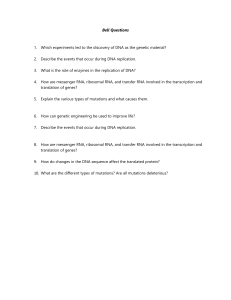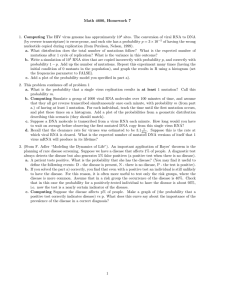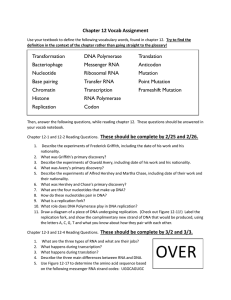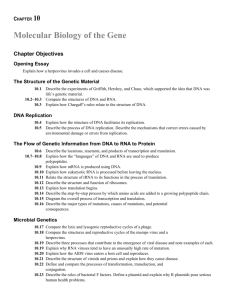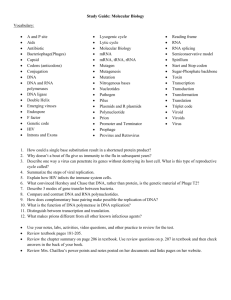Unit VI Objectives Ch. 9 and 10
advertisement
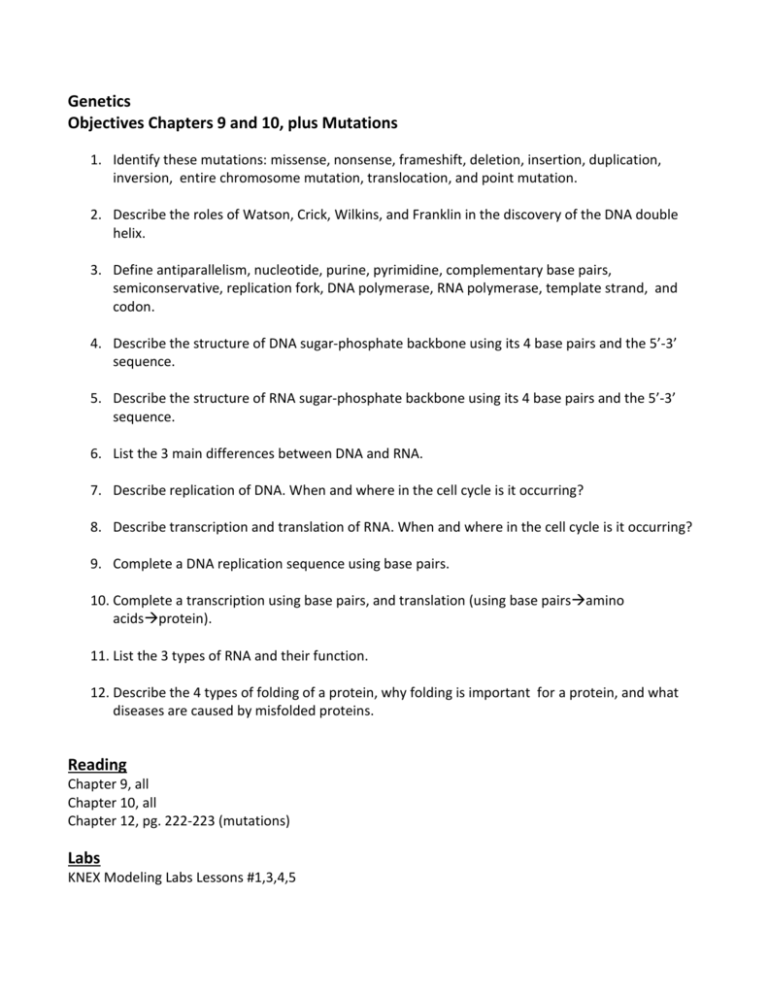
Genetics Objectives Chapters 9 and 10, plus Mutations 1. Identify these mutations: missense, nonsense, frameshift, deletion, insertion, duplication, inversion, entire chromosome mutation, translocation, and point mutation. 2. Describe the roles of Watson, Crick, Wilkins, and Franklin in the discovery of the DNA double helix. 3. Define antiparallelism, nucleotide, purine, pyrimidine, complementary base pairs, semiconservative, replication fork, DNA polymerase, RNA polymerase, template strand, and codon. 4. Describe the structure of DNA sugar-phosphate backbone using its 4 base pairs and the 5’-3’ sequence. 5. Describe the structure of RNA sugar-phosphate backbone using its 4 base pairs and the 5’-3’ sequence. 6. List the 3 main differences between DNA and RNA. 7. Describe replication of DNA. When and where in the cell cycle is it occurring? 8. Describe transcription and translation of RNA. When and where in the cell cycle is it occurring? 9. Complete a DNA replication sequence using base pairs. 10. Complete a transcription using base pairs, and translation (using base pairsamino acidsprotein). 11. List the 3 types of RNA and their function. 12. Describe the 4 types of folding of a protein, why folding is important for a protein, and what diseases are caused by misfolded proteins. Reading Chapter 9, all Chapter 10, all Chapter 12, pg. 222-223 (mutations) Labs KNEX Modeling Labs Lessons #1,3,4,5


